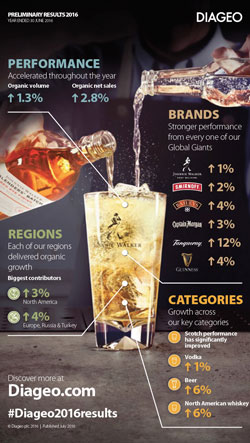When it comes to reporting financial results to the public, most companies rely on the traditional methods: conference calls and press releases. For a select few, however, social media is sending their stakeholders atwitter.
Interactions with results-related content from FTSE 100 companies on Twitter, LinkedIn, YouTube and SlideShare increased by 105 percent last year, according to FTI Consulting’s Social Divide Index. We recently tracked engagement by measuring the volume, quality and impact of companies’ social media activities.
Four companies – BP, Diageo, Aviva and Tesco – stand out as high performers, accounting for 42.5 percent of the total social engagement. Having examined what these companies do to stand out, we now present six things your company can do to create a results-related buzz on social media.
Think ahead – and think big picture
Audiences today have a huge appetite for rich, visual content. To stand out from the influx of competing social posts, results content must convey information beautifully and effectively to quickly grab attention. Diageo has this down to a science.
 Diageo's 2016 results infographic |
As seen to the right, the multinational distiller implements a single theme throughout the infographic, which makes for compelling presentation. Bold headlines and color schemes and straightforward copy are also elements of a successful image campaign. Given the quick turnaround needed for results releases, visuals can be produced prior to the announcement or even repurposed from other corporate materials, with figures added just prior to release.
Lean on internal stakeholders
Promoting results through employee advocacy can get the ball rolling. A review of retweets and likes of results-related posts for retailer Tesco reveals that a significant portion of interactions come from the company’s employees. Typically, internal stakeholders are inclined to be supportive and can be an asset for organic engagement. Through stakeholders, companies can create a virtual network of advocates around an announcement that will drive traffic to social posts.
Leverage your core advocate base by notifying employees and stakeholders of an announcement in a timely manner. Be sure to establish clear social media engagement guidelines for employees: do retweet and like official content, don’t offer commentary and analysis. The goal is to present financial reports succinctly.
Diversify your approach
An effective social strategy employs various methods to expand the scope of the audience. Insurance giant Aviva uses the broad landscape of rich media content – hyper-lapse video, live stream, infographics, fact cards, quote cards, photos, and more – to effectively communicate company results. By showcasing its breadth and depth of multimedia, Aviva offers stakeholders a smorgasbord of content that’s both engaging and shareable.
Consider originality: rather than go for the quick and simple option of a pre-approved corporate photo or a stock image, the ROI of investing in original content can make the difference when it comes to your message being read and engaged with.
Consistently post consistently
In a crowded field of messaging, repeatedly appearing at the top of a Twitter feed with an identical message is not necessarily a bad thing. BP reposts several times throughout the day. When you consider that the average lifetime of a single tweet is just 18 minutes, this technique extends the shelf life of the message through greater exposure. It also allows a communications team to focus on other aspects of a results content campaign and reaches audiences in different time zones without additional investment in social media content production.
Master the social dialect
The good news: you finally mastered the use of LOL. The bad news: now there’s ICYMI, QOTD, AMAA, CTA, and so on. Unfortunately, there are no Google translation tools for the ever-evolving social media lingo, which can be overwhelming and go stale seemingly as you’re typing. But being able to read between the letters is a must for companies that want their messaging to translate.
Communicating in social colloquialism will make corporate messaging more familiar and accessible to today’s audiences. Jargon-heavy content in a report can be reworked by turning long-form white papers into bite-sized visual posts and integrating trending keywords such as DYK (did you know) and ICYMI (in case you missed it). In time, YWGT (you will get there).
Create a timeline
For companies that are serious about grabbing eyeballs through social media to tell their corporate story, drawing out a timeline is key. After setting an announcement date, make plans just as for any other project that includes a content schedule well ahead of release date. Today’s digital world is ripe with opportunities for companies willing to tailor their messaging. With a robust kit of social tools and the right timing, businesses can turn opportunities into action and generate higher rates of engagement.
Ant Moore is senior managing director in digital & creative communications at FTI Consulting and a contributor to FTI Journal
IR Space is our free networking platform, created specifically for IR professionals and senior management at listed companies.
Features include:
- Networking: Connect with peers by searching based on their sector, market cap, location and role
- Knowledge base: Access to in-depth white papers, research reports and investor perception studies
- Sharing: Post articles, ask questions and start discussions
Join IR Space for free now at www.irspace.com











